The basset hound is loved by many across the world. This low-key and slow-slung hound can be stubborn at times, but they are always loving. These dogs grow to 14 inches tall at the shoulder. However, they are incredibly heavy-boned and have powerful, short legs. Furthermore, they have massive paws and possess the stamina and strength of a large breed. Bassets are notorious for their large, dome-shaped heads, long, soft ears, and droopy eyes, which make them appear depressed. Like other hounds, the Basset’s scenting ability is remarkable, second only to the bloodhound. While bassets are stubborn, they are mild and agreeable; they bark loudly and don’t particularly like to cuddle. But these hounds are extremely loyal. Below is a guide to basset hound progression, including growth charts, milestones, and training tips.
Basset Growth and Weight Chart by Age
| Age | Male Weight | Female Weight |
|---|---|---|
| Birth | 1 to 2 pounds | 0.9 to 1.8 pounds |
| 1 Month | 5 to 8 pounds | 4.5 to 7.5 pounds |
| 6 Weeks | 8 to 10 pounds | 5 to 9 pounds |
| 2 Months | 10 to 18 pounds | 9 to 16 pounds |
| 3 Months | 18 to 28 pounds | 16 to 26 pounds |
| 4 Months | 25 to 38 pounds | 23 to 36 pounds |
| 5 Months | 30 to 45 pounds | 28 to 42 pounds |
| 6 Months | 35 to 50 pounds | 32 to 48 pounds |
| 7 Months | 38 to 55 pounds | 35 to 52 pounds |
| 8 Months | 40 to 58 pounds | 35 to 54 pounds |
| 9 Months | 42 to 60 pounds | 37 to 56 pounds |
| 10 Months | 44 to 62 pounds | 39 to 58 pounds |
| 11 Months | 45 to 64 pounds | 40 to 58 pounds |
| 12 Months | 45 to 65 pounds | 40 to 60 pounds |
| 2 Years | 50 to 70 pounds | 42 to 65 pounds |
When Will My Basset Hound Stop Growing?
While the basset hound’s growth rate slows down between 12 to 18 months, they will still fill out until the age of two. Since they are dwarf large breed dogs with deep chests, bassets are prone to bloat. Therefore, it is a bad idea to feed them once a day. Instead, they need 1 to 1.5 cups of high-quality kibble twice a day, once in the morning and again in the evening. In addition, they need water available throughout the day so they do not dehydrate.
Basset hounds are susceptible to certain health conditions. However, this does not mean your fur baby will get any of these conditions. But, one should always be informed and prepared. As a result, ensure your basset is healthy by taking it to a vet at least twice a year for a regular check-up. The earlier any health issue is detected, the easier it is to treat.
How Big Will My Basset Hound Be When It’s Fully Grown?
Once your basset is fully grown, they have a body length of 26 to 35 inches and measure between 11 to 15 inches in height at the shoulders. Adults weigh around 40 to 70 pounds, depending on gender, genetics, and diet.

Once your basset is fully grown, they have a body length of 26 to 35 inches and measure between 11 to 15 inches in height at the shoulders.
©Ewa Studio/Shutterstock.com
The Biggest Basset Hound Ever Recorded
There are rumors of a 122-pound basset hound that wound up in a shelter in Las Vegas. However, this information cannot be confirmed. But, if it is true, this poor dog’s size is likely due to obesity because of a poor diet and neglect.
When Should My Basset Hound Be Spayed or Neutered?
In the past, vets believed that spaying or neutering your dog between four to six months was best. However, studies have proved that it all depends on the size of the breed. For example, smaller breeds sexually mature sooner, usually by six months of age. As a result, spaying or neutering them at a young age should be fine. But larger breeds usually sexually mature between 12 to 18 months, so having the procedure done later would be best.
Research shows that spaying and neutering your dog when they are too young can impact their health. They have an increased chance of getting conditions like elbow or hip dysplasia, cranial cruciate rupture or tear, and cancers like hemangiosarcoma, lymphoma, osteosarcoma, and mast cell tumor. Since bassets are medium to large dogs, the best time to spay or neuter them is between six to 12 months. However, always consult with a veterinarian before making your decision.
When Should My Basset Hound Be House Broken?
It’s never too early to start potty training. However, the ideal age is eight weeks, as this is when these pups are most likely to learn. Firstly, consistency is essential when potty training. Therefore, pick a designated area in the garden where you would like your basset to relieve itself, and always take the pup to that area. Try to create a routine by taking your basset out regularly, especially after naps, meals, and playtime. After a while, your puppy will associate that area with relieving itself, and the consistent routine will help reinforce its behavior.
While this process can be frustrating, staying patient and positive is vital. Dogs are very intuitive and can sense your emotions, so if you’re angry or stressed, it can rub off on your pup and hinder its progress. Accidents are bound to happen, and it’s important not to punish your basset. Instead, keep encouraging them to go outside and reward them with treats and praise when they do. Remember, patience, consistency, and a positive attitude are how you are going to potty train your pup.
When Should My Basset Hound Stop Eating Puppy Food?
Basset hound progression is fast, as they are typically fully grown by 12 to 18 months. Therefore, this is the best time to switch to adult food. However, consulting with your veterinarian before transitioning to a different food is essential. Puppies can suffer from growth abnormalities and nutritional deficiencies, resulting in delayed or stunted growth. In addition, it can also increase their risk of future joint, bone, brain, and eye conditions.
When Will My Basset Hound Start Losing Teeth?
Basset hound pups progress pretty quickly. As a result, their baby teeth start falling out between 12 to 16 weeks. So, during this time, keep a lookout for little rice-sized teeth around the house. Their permanent teeth emerge as soon as the baby tooth has fallen out. But, this process is painful, so ensure your pup has chew toys to help their discomfort. For example, kongs and Nylabones work well.
When Should I Start Training My Basset Hound?
You should start training your basset hound as soon as you get it. When you train these dogs from a young age, it establishes good habits and prevents bad behavior as they get older. Bassets respond best to positive reinforcement. However, while treats work wonders, ensure not to give your hound too many. You can reward them with praise and toys as well. Basset hounds have a stubborn streak, so it’s essential to remain patient and consistent while training them. These dogs are scent hounds and are often trained for hunting purposes.
What Cues Should I Teach My Basset Hound First?
The first words you should teach your basset are “No” and “Good,” as they need to differentiate between good and bad behavior. Once they know these words, you can move on to basic commands like “down,” “heel,” “sit,” and “come.”
When Will My Basset Hound Calm Down?
Basset hounds usually calm down between two to three years of age. This is when they reach full maturity, and their energy levels start to decline. However, if your basset receives the correct amount of exercise and socialization, a daily routine, and regular veterinary check-ups, they may calm down sooner. Another way to help them calm down is by spaying or neutering them.
Common Health Issues Your Basset Hound Might Experience
As basset hounds progress in life, they are prone to several health issues, including:
- Hip dysplasia
- Obesity
- Luxation Patella
- Eye conditions
- Dental diseases
- Glaucoma
- Elbow dysplasia
- Panosteitis
Pictures of Basset Hounds as Puppies
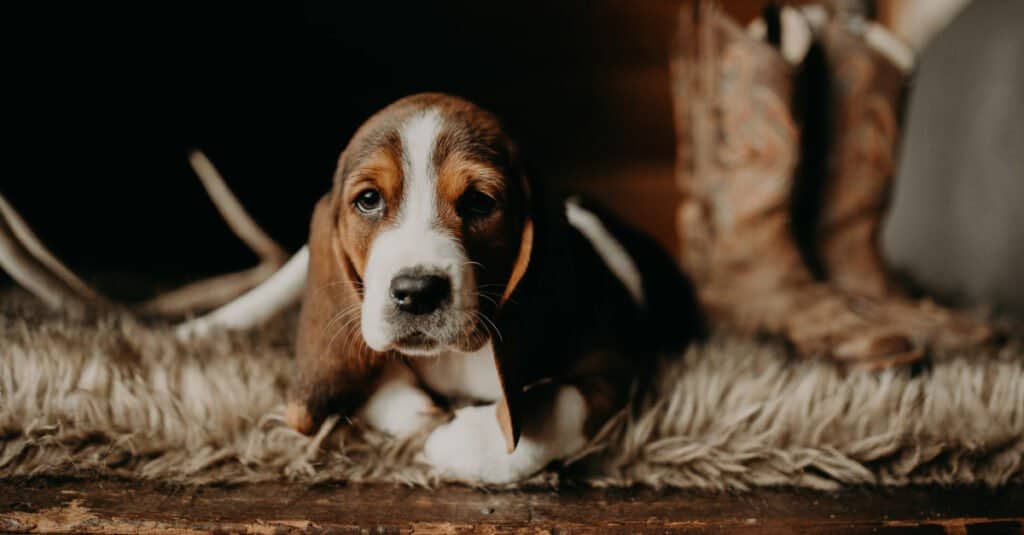
You should start training your basset hound as soon as you get it. When you train these dogs from a young age, it establishes good habits and prevents bad behavior as they get older.
©iStock.com/Jessica Nystrom
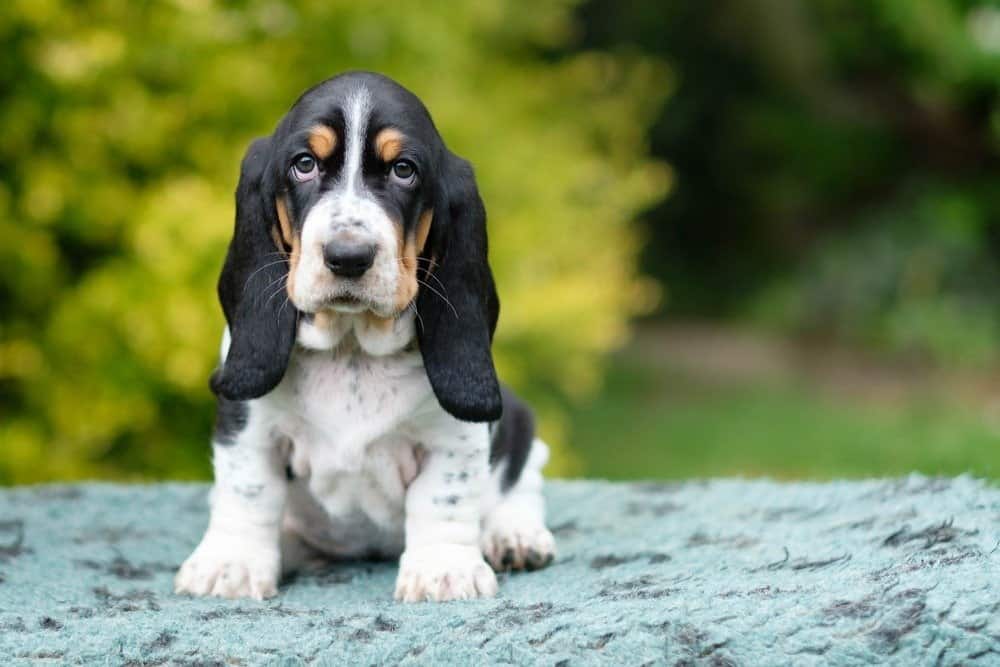
Basset hounds are great with children. However, they need to be trained and socialized from a young age.
©Jon Buscall/Shutterstock.com
Pictures of Basset Hounds at 6 Months
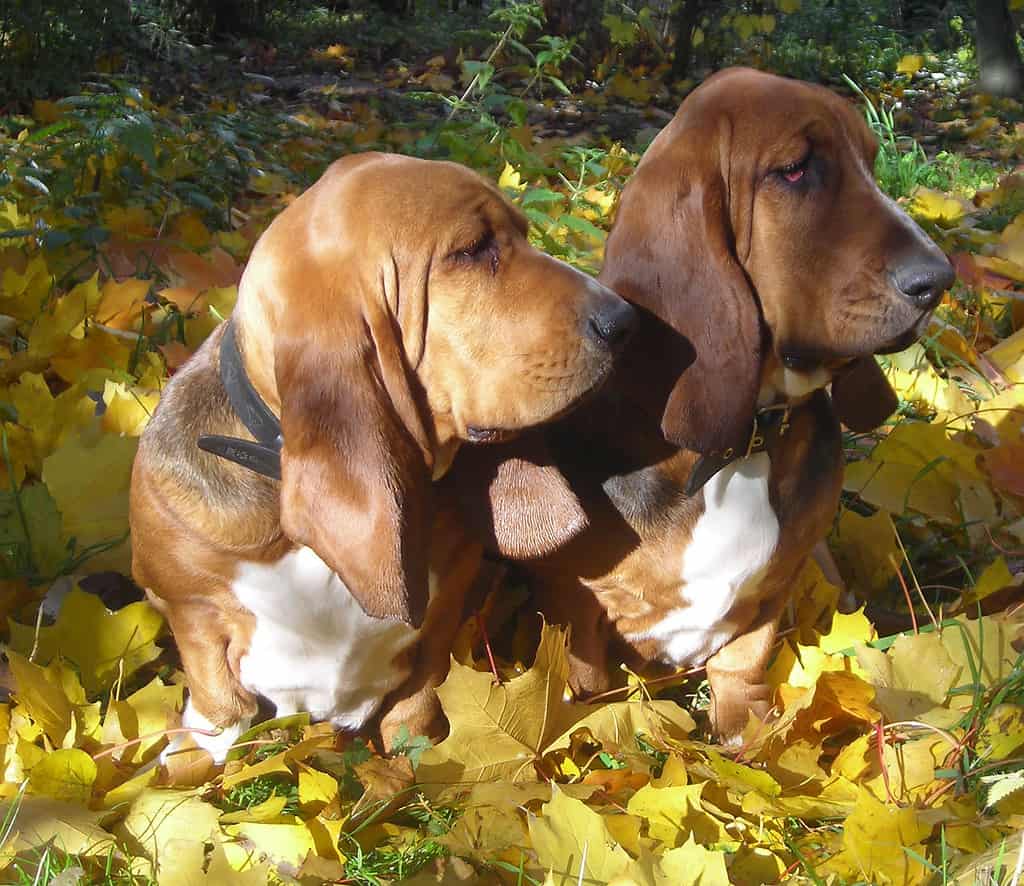
6-month-old basset hound puppies posing in autumn leaves.
©Сварта Пим / Public domain – License
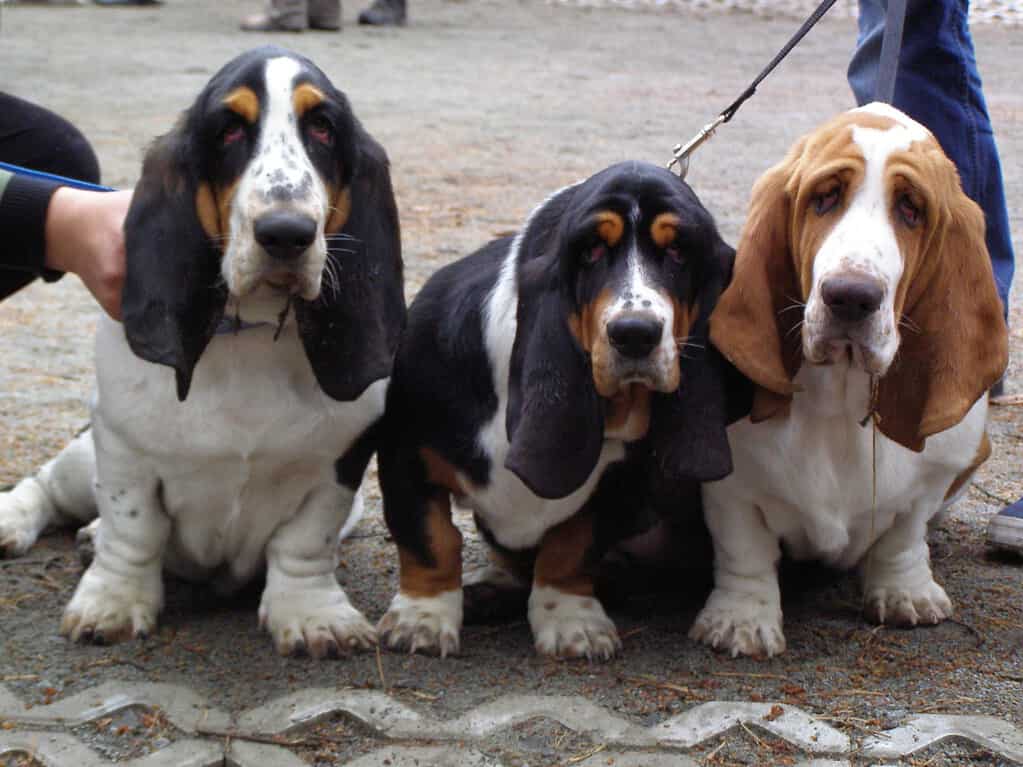
Three 6-month-old basset hound puppies display their massive paws, long ears, and droopy eyes.
©Ondra Lachman / Public domain – License
Pictures of Fully Grown Basset Hounds
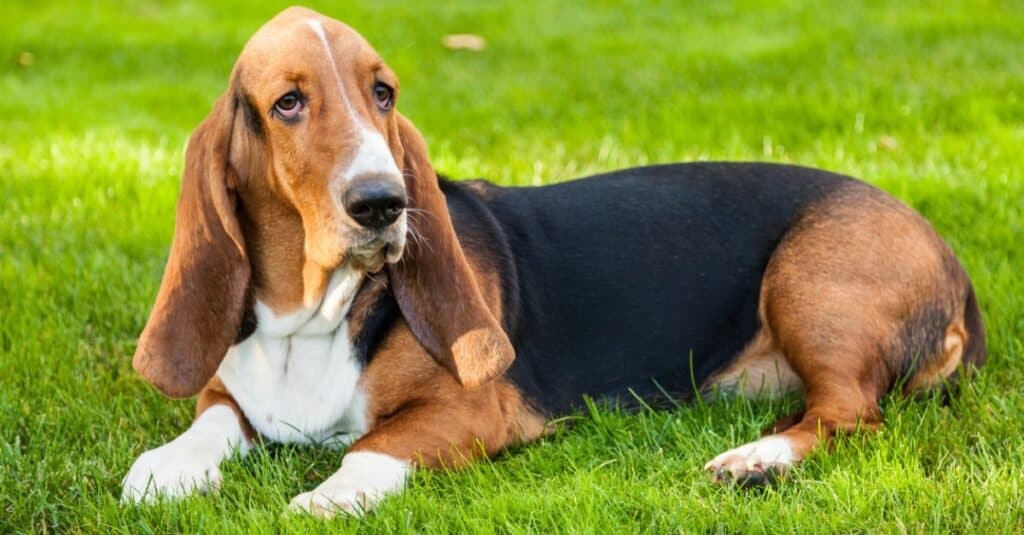
Adults weigh around 40 to 70 pounds, depending on gender, genetics, and diet.
©iStock.com/artisteer
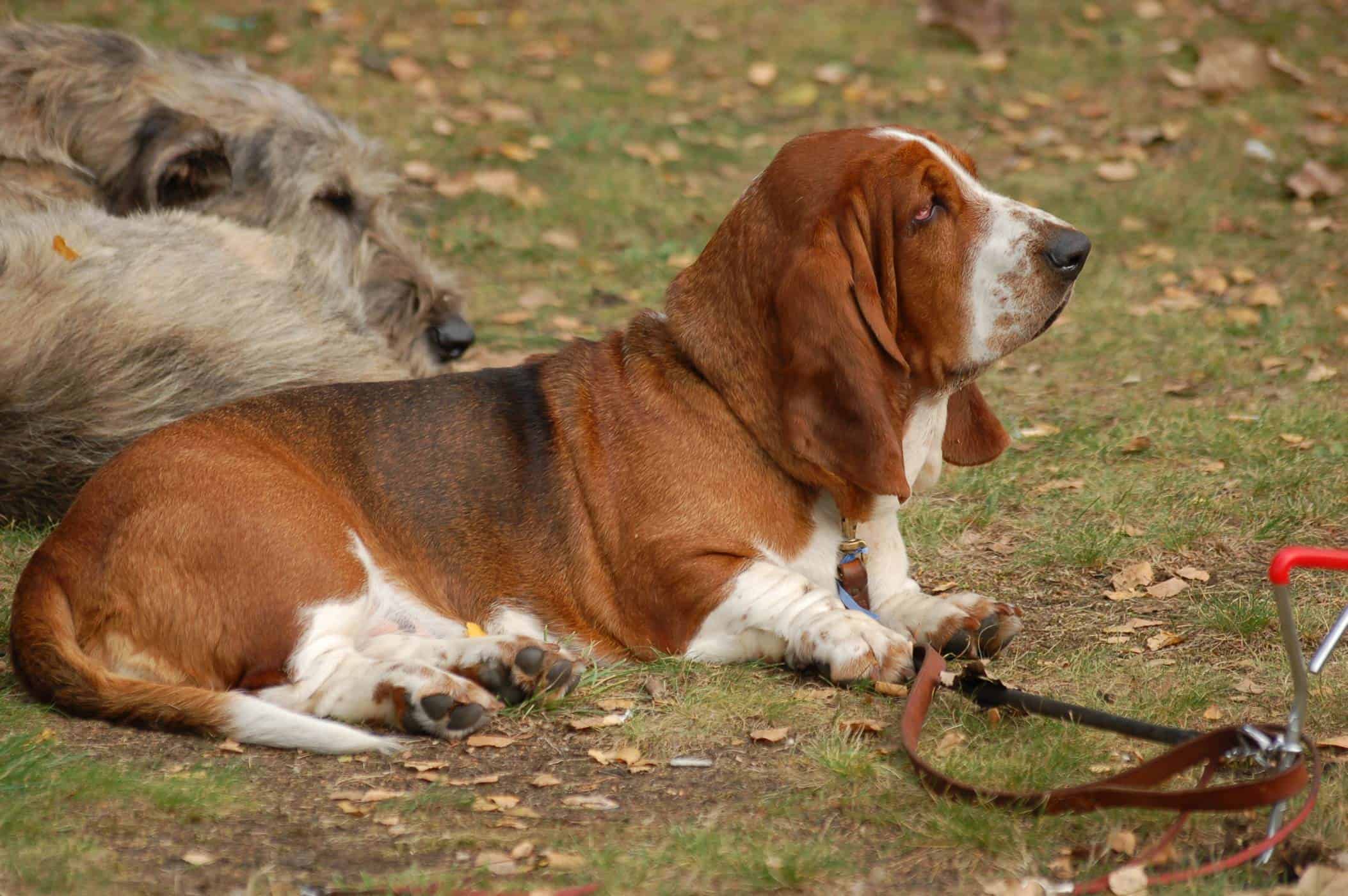
Basset hounds usually calm down between two to three years of age. This is when they reach full maturity, and their energy levels start to decline.
©Lilly M, CC BY-SA 3.0, via Wikimedia Commons – License
Other Dog Breeds Similar to Basset Hounds
The photo featured at the top of this post is © Bill Anastasiou/Shutterstock.com
Ready to discover the top 10 cutest dog breeds in the entire world?
How about the fastest dogs, the largest dogs and those that are -- quite frankly -- just the kindest dogs on the planet? Each day, AZ Animals sends out lists just like this to our thousands of email subscribers. And the best part? It's FREE. Join today by entering your email below.
Thank you for reading! Have some feedback for us? Contact the AZ Animals editorial team.







